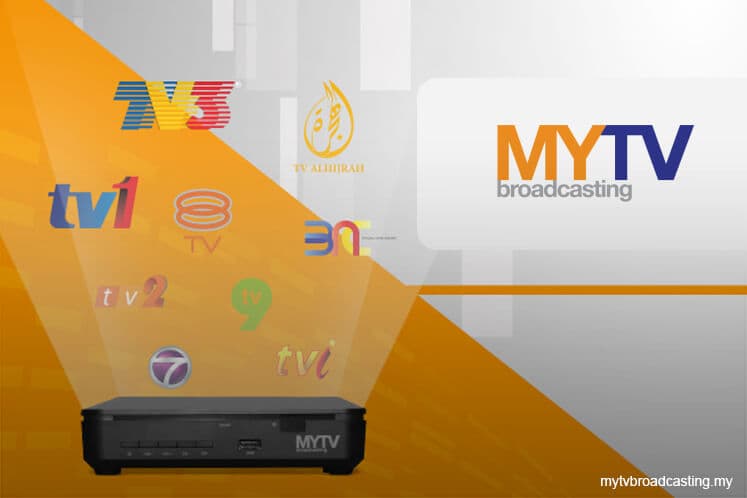
This article first appeared in The Edge Malaysia Weekly on April 10, 2017 - April 16, 2017
AFTER several delays over the past few years, pressure is now mounting for the national rollout of the digital terrestrial television (DTT) broadcast that is spearheaded by MyTV Broadcasting Sdn Bhd, a company owned by billionaire businessman Tan Sri Syed Mokhtar Al-Bukhary.
The government is now targeting June 2018 for analog switch-off (ASO), meaning a full transition to DTT broadcast after which analog broadcast stops completely. That would be the third publicly known deadline since Puncak Semangat Sdn Bhd, MyTV’s holding company, won the contract in January 2014.
A source close to MyTV says the company is now eyeing the year-end to achieve full preparedness for the migration. Infrastructure readiness was at about 85% at press time.
However, the loss-making company will need at least several hundred million ringgit more in funds to see through the entire project up to December, the source adds.
“The next couple of months will determine whether the company sinks or swims. Otherwise, MyTV may need a strategic partner to come in.”
The funds would likely come from its shareholders as the loss-making company had not recorded any revenue between financial years 2013 and 2015 ended Dec 31, Companies Commission of Malaysia’s data shows. Its FY2016 numbers are not yet available.
MyTV CEO Michael Chan could not be immediately reached for comment. It is understood that he was appointed in February this year to reinvigorate the execution process.
To recap, Puncak Semangat edged out i-Media Broadcasting Solutions Sdn Bhd and REDtone Network Sdn Bhd in January 2014 to secure the rights to build, operate and manage the DTT infrastructure nationwide.
In June 2013, when announcing the three as shortlisted bidders for the job, the Malaysian Communications and Multimedia Commission (MCMC) said full migration is expected to happen by end-2015.
This migration deadline was shifted to last year when MyTV appointed Telekom Malaysia Bhd (TM) to provide DTT infrastructure, network facilities and related services via a framework agreement in November 2014.
Last month, Deputy Communications and Multimedia Minister Datuk Jailani Johari said Radio Televisyen Malaysia (RTM) will go fully digital by June next year. He told reporters that another 46 transmission towers will be put up to facilitate the migration.
The push towards DTT began as early as August 2006 when MCMC held a public inquiry on a standard for DTT in Malaysia. However, initial application for bidders only began in early 2012.
Regionally, the move towards fully digitised broadcast is also ongoing, with Singapore reportedly aiming for ASO by the end of this year.
In a nutshell, digital transmission is more efficient than analogue broadcasting. A full migration would free up spectrum resource as more channels can be carried in the same bandwidth.
Industry observers note that theoretically, the government could later monetise the excess spectrum resource similar to the spectrum reallocation exercise among telecommunication companies in early 2016.
For the end-user, a fully digital transmission means superior picture quality and more interactivity. Viewers may also be able to access mobile television applications and additional services eventually, according to the MCMC’s Standard Radio System Plan published in 2007.
However, industry sources say timely execution has been a challenge for MyTV in the rollout process so far. They add that MyTV had also been involved in contractual disputes with some vendors over payment matters.
The 2014 framework agreement with TM was followed by a definitive service agreement (DSA) in November 2016. Both parties also signed a separate consultancy agreement in 2015.
The DSA stipulates that TM will provide the DTT services for 15 years from 2016 with a total contract value of RM916.1 million. The agreement terms will be subject to review every five years beginning 2019.
When contacted, TM group deputy CEO Datuk Bazlan Osman says the group is unable to comment on the status of the DTT rollout project as it is just a sub-contractor to MyTV.
If MyTV is able to complete the infrastructure for nationwide coverage by year-end, the next hurdle is fixing the fees. Previously, the company wanted to charge RM12 million annually per channel, which industry players said was too expensive.
It is learnt that the company is now reconsidering its revenue model and may lower the fee substantially in exchange for a possible income-sharing arrangement from advertising.
At present, MyTV has nine stations lined up and market talk has it that it is aiming for another six by June next year.
The nine stations are RTM’s three stations — TV1, TV2, TV5 — as well as government-owned Bernama TV, TV3 and TV Alhijrah. Media Prima’s ntv7, 8TV and TV9 stations will also be on the platform.
Another hurdle is on the end-user side as the switch to DTT requires a set-top box for most households that do not have digital-ready television sets. A set-top box decodes a digital television signal to analogue for the television screen.
The rollout will depend on the free distribution of about 4.5 million set-top boxes, industry observers say, with MyTV bearing most of the cost. A market observer estimates that each set-top box will cost a couple of hundred ringgit each.
It is learnt that about 500,000 units have been distributed so far, leaving MyTV with much ground to cover by December. Jailani said last month the DTT rollout would be done in phases beginning with Pahang, Kelantan and Terengganu.
Save by subscribing to us for your print and/or digital copy.
P/S: The Edge is also available on Apple's AppStore and Androids' Google Play.